It is fair to say that a greatness of a country may be measured by the wealth of its culture and its art. Portugal is said to have the oldest borders in Europe and has since its beginning always been considered a nation prone to artistic movements and of artistic people. These were, in many ways, the result of a never-ending curiosity and willingness to discover more and more of the world. This restless is an innate characteristic of the Portuguese who show a tendency to always want to explore further, that have the desire to know more and are infatigable in this search. These were some of the reasons that lead us to travel across the globe in a time when imaginary legends and tales dominated over science.
Times evolved, and the Portuguese kept on loving and being proud of their art, but also of their stories, their legends and heroes. Come the 20th century and an era of tremendous change takes place in the world while all the while Portugal went through part of it under a dictatorship. Having one foot in the past and another one in a longing for a new future, the Portuguese artistic panorama had to find creative ways to keep afloat. Even if artists were always a resistant breed within any society, in Portugal there was a particular time when anyone who felt creativity and a desire for artistic creation blooming inside, had to be extra masterful at concealing it in a way that the regime would never question it, which could lead to terrifying consequences. In the end, the outcome was favorable to the Portuguese and we gained both freedom and a new, unique type of artistic creation in Europe: the neo-realistic movement and all the post-movements that ensued. A new generation of men and women emerged with increased strength and an incredible desire to live as soon as possible everything that had been left behind due to the years of repression.
We can safely say that José Saramago’s life and work are the most perfect example of this said generation. A man who loved words so much that he educated himself in literature and created his very own language to try to explain the world and what goes on inside each and every one of us in a way which is so relatable that he ends up winning a Nobel Prize for Literature and being published all over the world.
This year of 2022 is a special year, because it is when we are celebrating 100 years of the birth of Saramago on November 16th 1922. There will be a variety of talks, conferences, courses and even TV shows and theater plays relating to the writer in different cultural institutions, universities, cinemas, theatres and even bookstores. Many of these events will be organized by the José Saramago Foundation, which is also hosting a complete program of events dedicated to the author. What this means is that 2022 is definitely the right year to start learning more about Saramago!
Here is a brief portrait of the man and his life, so that you can fully apprehend the worth of a genius that has done so much for so many others in ways that were unknown to him when he started writing. We also leave you with a brief list of places in Portugal related to his work, as you might feel like you need to walk in Saramago's footsteps to better understand the man and his world.
Who was Saramago?
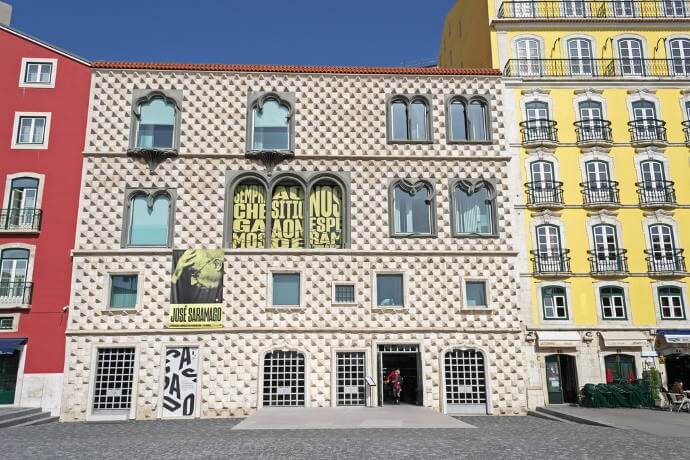
The author of over 40 titles, José Saramago was born in November 1922, in the village of Azinhaga, and died in Tías, island of Lanzarote in the region of Las Palmas, in Spain, in June 2010.
When he was a child, his family moved to Lisbon, where he lived until 1990. In his younger years he trained as a mechanics locksmith and later found employment in a car repair garage and also at a metalworking facility. Later on in life, with a curiosity that never ceases to increase, he attends public libraries and borrows books, as many as he can, and gets an informal education that grants him employment at a Publishing House, as a proofreader and a translator.
Saramago had already tried his hand at novels and poetry but failed to create something that he would be truly proud of. It is only from the moment that he is completely involved in the literary and artistic scene of the post-revolutionary Portugal in the 70’s that he starts writing prolifically, which he will do until his last days.
Saramago innovated in the way he approached tabu themes like the ones related to the Catholic Church, but also in the way that he used grammar, namely the period and the comma - he preferred to call them pause signs -, marking the sentence with a different pace given by orality instead. As a consequence of his time and of his ever-questioning genius, Saramago subverted the norm: he put everything in a state of disorder, he revolutionized.
If this is a clearly innovative aspect of his work, it is not without controversy - some criticized him for ignoring the canons of Portuguese written grammar. Repeatedly misunderstood and put aside by some members of the Portuguese government who clearly had other preferential writers to put forward in international competitions and presentations, he moved to the Spanish island of Lanzarote in the early 90’s.
A few years before, Saramago had remarried to a Spanish journalist, Pilar del Rio, of whom he said “The great event of my life was having met her”, and that she was in many ways his real “pillar”, which is the literal meaning in Spanish of her first name.
José Saramago received the Camões Award in 1995 and the Nobel Prize for Literature in 1998. His books are published in 64 countries and in 49 different languages. The José Saramago Foundation was created in 2007 and the writer participated in the process, hoping to provide more opportunities for everyone to access Literature and to further their knowledge in the field, to move forward and to progress without having to go through the same difficulties felt by the writer himself during his lifetime. The Foundation has an extensive cultural and educational program, most of it free of charge, and even their own literary prize, the Prémio José Saramago for new writers.
The author of novels, short stories, chronicles, theater, and poetry, Saramago is internationally recognized as one of the most important contemporary Portuguese writers. He received several awards during his lifetime, but according to him, the Nobel Prize came as surprise. He died in 2010 and his funeral was accompanied by thousands of people, in an emotional tribute to the man and the author.
The importance of certain places
Certain places in Portugal were particularly important for the life and for the work of Saramago. Although the following list is quite summarized, it represents certain turning points related to the writer’s career, and that lead him to the success later achieved. This might very well be the perfect starting point for you to get to know José Saramago’s life and work.
Lisbon
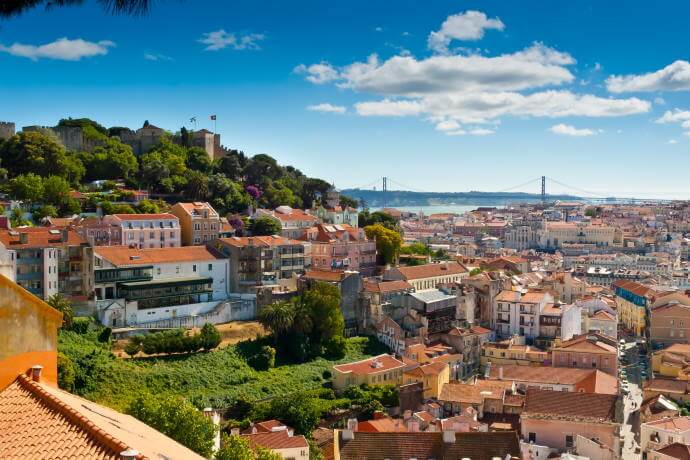
The Portuguese capital is the backdrop of a number of Saramago's works, constituting a privilege for his texts and becoming an integral part of them.
The nights spent in the public library of Palácio Galveias, a 17th-century manor house of Lisbon, were fundamental to Saramago’s self-education. He even said: "And it was there, without help or advice, guided only by curiosity and the will to learn, that my taste for reading developed and refined".
Lisbon is undoubtedly the space that Saramago knows best - physically, but also emotionally. To know Saramago's Lisbon is, essentially, to know the real Lisbon, the historical city of the palaces, cathedrals and grand boulevards, but above all, the city of the ordinary inhabitants, men and women who earn their living working in the most ordinary everyday life.
Take one of the many trams still in use by the locals to commute like the fictional character Ricardo Reis did in the book “The Year of the Death of Ricardo Reis” and, like him, stop at one of the many cafes in downtown Lisbon (Baixa) for a codfish fritter or a pastel de nata, along with an espresso or a ginjinha liquor. Walk up from the river front in Terreiro do Paço to Alfama as did the characters in “Raised From the Ground” and “Baltasar and Blimunda”. Visit the castle above and get the same views over the river Tagus (Tejo) that the first Portuguese had in the 12th century, as per the description of “The History of the Siege of Lisbon”.
Finally, make sure to take some time to visit the Fundação José Saramago (José Saramago Foundation) located in the Casa dos Bicos building, between the neighborhoods of Baixa and Alfama. Dating from the 16th century, this former noble mansion was given by the city hall to the José Saramago Foundation in 2012 to be used as its headquarters and museum dedicated to the writer.
Anywhere you go in the city, anything you do, you will feel that its unique light will chase you, reflecting the brightness of the river waters onto the multicolored buildings thus providing the perfect scenario for inspired tales and magical stories.
Mafra
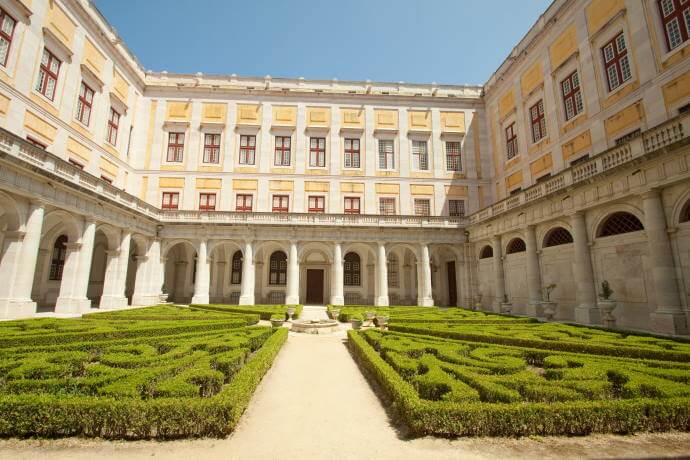
Mafra is a town in the so-called Saloia (Rural) region of the North West of Lisbon, about 40 minutes driving from the capital. Its most important and well-known landmark is the Palace and Convent of Mafra, whose construction takes place in the 18th century.
The construction of the Mafra’s Royal Building, as it was then known, is the central theme of the book “Baltasar and Blimunda” (“Memorial do Convento”, in Portuguese). The complex of buildings is composed of a palace and a convent together, in Baroque style. The back of the building opens out to a garden and park, called nowadays the Jardim do Cerco.
Built over more than three decades, the construction of the Palace of Mafra began in 1717 from the initiative of King João V, as a result of a promise he made to the Fransciscan monks in case he would have any descendants from Queen Maria Ana of Austria.
The building was designed by Johann Friedrich Ludwig (or Ludovice, in Portuguese), a German goldsmith, architect, and military engineer. It occupies an area of approximately four hectares (9 acres). Attached to the Convent, the Tapada de Mafra, a lush green wood, acquired by D. João V in the mid-18th century to expand the setting of the building, was used as a hunting preserve for wild game and poultry and is currently open to the public.
Fueled by the wealth that came from the colonies, the Royal Building of Mafra has unique characteristics in Portugal, being one of the most imposing and remarkable monuments in Portugal and Europe. The story of the two main characters in “Baltasar and Blimunda” (“Memorial do Convento”) is an eventful one, deeply connected to the decades of construction of this palace. It is a story of love, but also a historical portrait and a profound social analysis of what was the life of the Portuguese in an era when the Great Portuguese Empire was put in front of the Portuguese themselves.
Maybe you can fit a day or a half day tour from Lisbon to Mafra into your holiday plans?
Azinhaga, Golegã
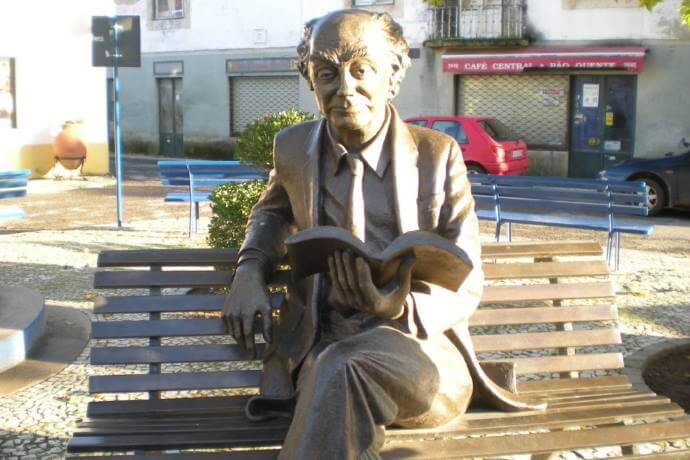
It is impossible to want to know Saramago and skip Azinhaga. This is a small town in the Ribatejo region, in the district of Santarém, less than 90 minutes driving from Lisbon. It can be seen on your way from there to Porto or Óbidos, as it represents just a short detour for the ones traveling up North.
It is precisely here that the José Saramago Foundation has a branch in what used to be an old elementary school. Visiting Azinhaga is like entering the private world of Saramago: you will be able to find the bed where José Saramago's grandparents slept, and which he mentions in his Nobel Prize speech, and an itinerary with several family photos of José Saramago from the time he wrote “Small Memories”, the book chosen as the highlight in this space.
There is also a library, a bookstore with books by José Saramago in several languages, books in Portuguese by other Nobel Prize winners and José Saramago Prize winners, children's books, and an auditorium where cultural activities are regularly held.
Here you will certainly feel as if you were just invited to come and stay with the family, to see in the details what built the man and how much of his own life is in his work. And he knew it as he states that "we are much more of the land where we were born, and where we were raised, than what we imagine."
Lavre, Montemor-o-Novo
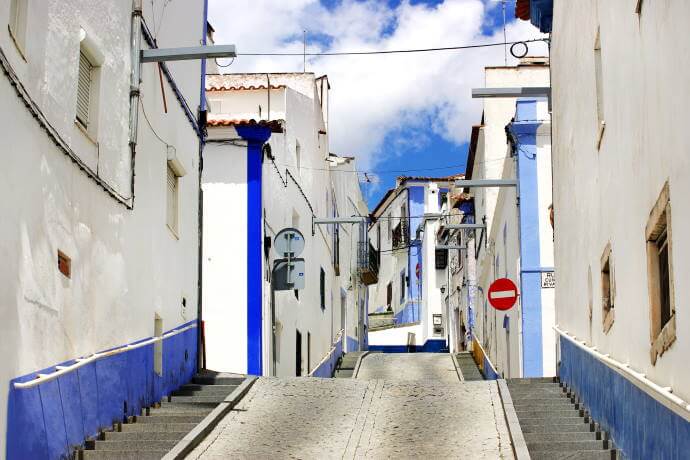
Lavre is the smallest of towns in Central Alentejo, a little over 1 hour distant from Lisbon to the East.
José Saramago lived for some time in this town in the late 1970s. The experience he went through during his stay served as inspiration for the novel “Raised from the Ground” (“Levantado do Chão”), published in 1980, and the highway to worldwide recognition and later the Nobel Prize.
The region around Lavre is incredibly rich in history and there’s much heritage to keep you busy for a few days, but if you already have other plans, at least try to take a detour to the town coming from Évora to Lisbon and walk around the quaint town center of cobble stones and whitewashed houses. Hear the whispers of tales told discretely by the locals about their fellow countrymen who suffered so much throughout those dark years of the dictatorship and watch their smiles open wide when you mention Saramago. The writer was the first to put on paper the struggles and misery of the people from the region and who elevated social awareness about the challenges felt by these people to a new level.
Today, Lavre is a proud small town with beautiful and calm surroundings that made peace with its past, much due to the words of José Saramago.
Saramago is a journey worth starting
The author is always current and has an incredibly insightful view on society, its evils and unresolved issues. His books offer us the best of opportunities to reflect on the world we live in and think about what we can do to make it the world we would like to live in. Enter Saramago's world and let yourself be led into questions that are difficult and sometimes uncomfortable, but that will bring you into the light of unexpected answers and infinite possibilities.



